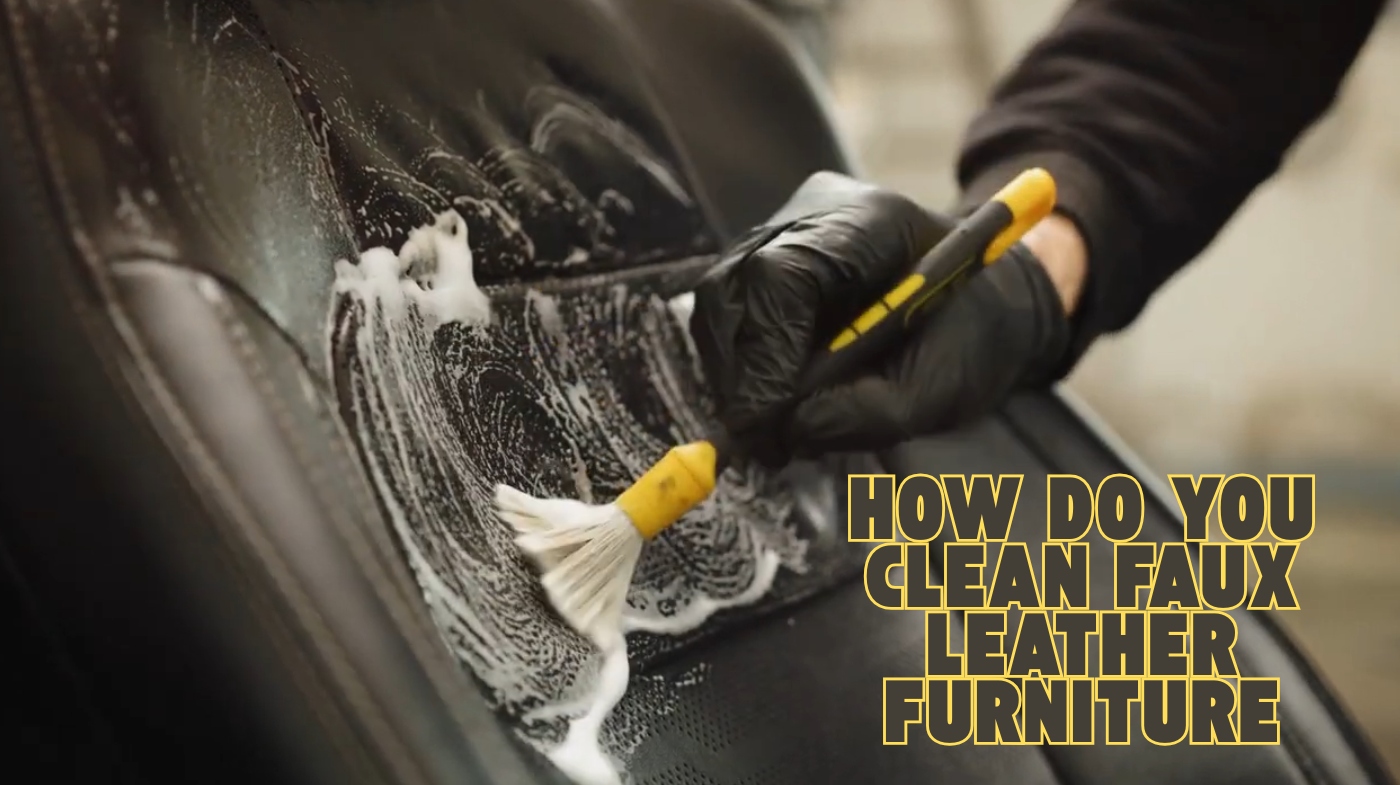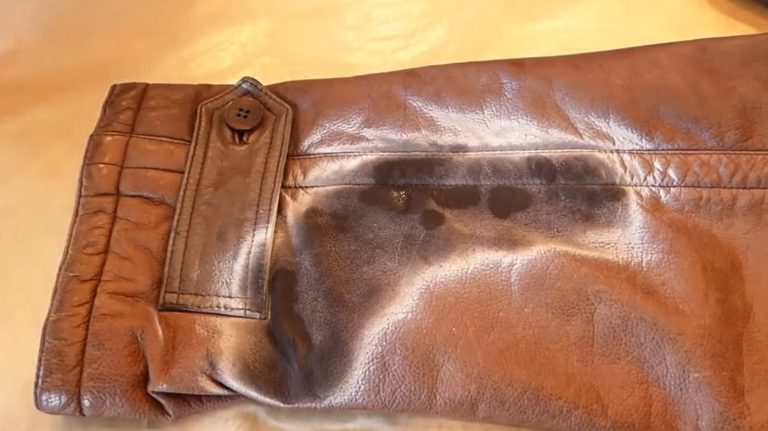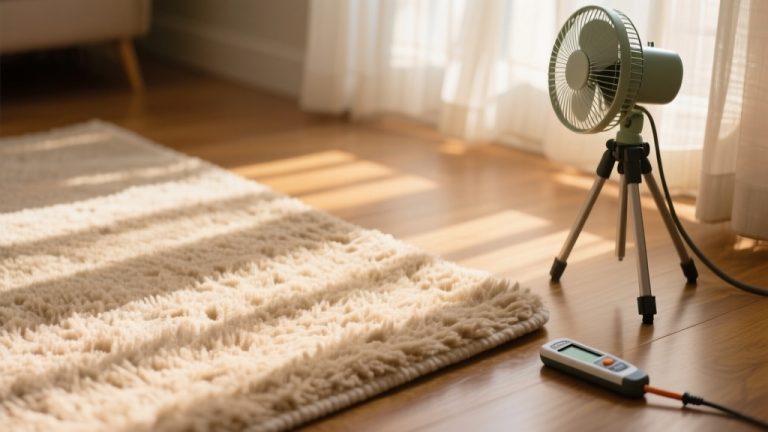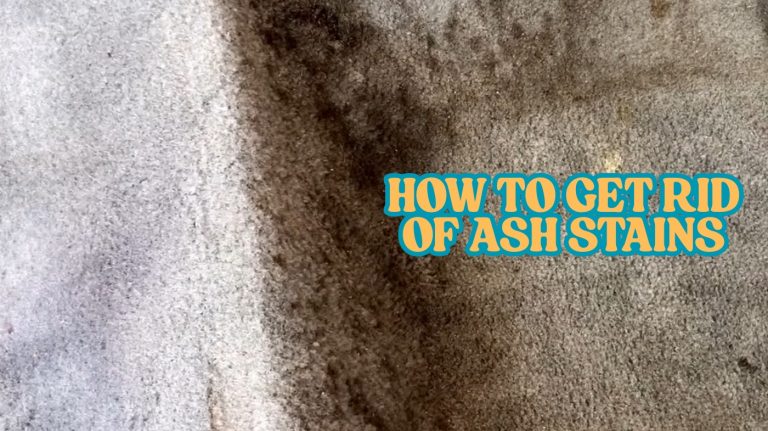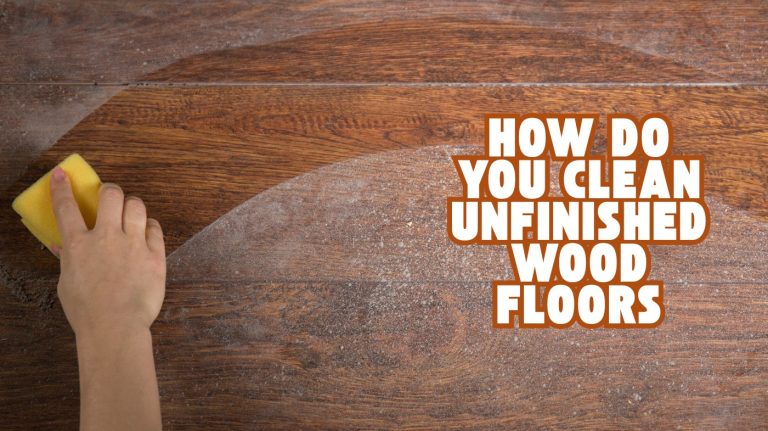How Do You Clean Faux Leather Furniture? Easy Steps Inside
To clean your faux leather furniture, start with a soft microfiber cloth and a gentle cleaning solution—mix mild dish soap or baby shampoo with warm distilled water.
Lightly dampen the cloth and wipe down surfaces in sections, avoiding excess moisture. For stains, try a vinegar-water mix or sparingly use rubbing alcohol on ink spots.
After cleaning, apply a vegan-friendly conditioner every few months to keep the material supple.
Stay attentive to proper tools and techniques to maintain its finish. You’ll find more detailed tips to keep your furniture pristine ahead.
Key Takeaways
- Use a soft microfiber cloth and mild dish soap diluted in warm distilled water for regular cleaning without damaging faux leather surfaces.
- Gently vacuum textured or crevice areas with a brush attachment to remove dust and dirt safely before wiping.
- Remove stains by blotting with a vinegar-water solution or using rubbing alcohol sparingly on ink spots, testing hidden areas first.
- Apply a vegan or synthetic leather conditioner every 3–6 months to maintain softness and prevent cracking, especially in dry environments.
- Always dry with a soft cloth after cleaning, avoid direct heat or sunlight, and ensure good ventilation for even drying.
Gathering the Right Cleaning Supplies
Before you begin cleaning your faux leather furniture, gathering the right supplies is essential to guarantee effective and safe maintenance.
Start with soft towels or microfiber cloths to avoid scratching the delicate surface. A vacuum cleaner with a brush attachment helps remove dust and debris from crevices.
Because faux leather is made from synthetic layers, it is important to use gentle cleaning tools that do not damage the surface.
Consider using cleaning tools with soft natural bristles to gently lift dirt without harming the material.
Gather soft towels and a vacuum with a brush attachment to safely prep your faux leather furniture for cleaning.
Use spray bottles for even application of diluted cleaning solutions. A soft-bristled brush lifts dirt from the textured grain without causing damage, while absorbent cloths wipe away residues completely.
Choose mild dish soap or commercial faux leather cleaners with pH-neutral, non-abrasive formulas to protect the finish.
Leather cleaning foams and conditioners specifically designed for faux leather ensure gentle cleaning and long-term suppleness.
Finally, organize gloves, drying cloths, and storage containers for safety and efficient workflow throughout the process.
Preparing the Cleaning Solution
When preparing your cleaning solution, selecting mild, bleach-free ingredients like dish soap or baby shampoo is essential to preserve your faux leather’s finish.
Use distilled water to avoid mineral deposits and always mix fresh solutions before each cleaning session.
Here’s how to prepare your solution effectively:
- Dissolve a few drops of mild soap in a cup of warm distilled water for a balanced, gentle cleaner.
- For stubborn spots, mix equal parts distilled white vinegar and water to create a natural, mild solution. Faux leather is often made with vinyl or plastic containing toxic chemicals, so gentle cleaning agents are necessary to avoid damage.
- Use rubbing alcohol sparingly with a cotton swab for targeted ink or dye stains, avoiding soaking.
- Avoid harsh chemicals, excessive soap, or additives to prevent damage or residue buildup.
Always test your solution on a hidden area before full application.
Step-by-Step Cleaning Process
Although cleaning faux leather furniture requires care, following a systematic process guarantees you preserve its texture and finish.
Start by vacuuming the surface with a brush attachment to remove loose dirt from seams and creases.
Then, gently wipe the furniture with a well-wrung microfiber cloth dampened in lukewarm water, working in sections. For textured areas, use a soft-bristle brush in circular motions to lift embedded dirt without abrasion.
Immediately dry the surface with a clean microfiber cloth to prevent moisture damage. It is important to avoid harsh chemicals or solvents that can strip the finish and cause damage to the faux leather. Using biodegradable cleaners can be a safer alternative to protect the material.
Finally, consider applying a faux leather conditioner according to the manufacturer’s instructions to maintain suppleness and protect against cracking.
Regular weekly dusting and monthly deep cleaning will help extend your furniture’s lifespan while preserving its aesthetic appeal.
Effective Methods for Stain Removal
Since faux leather can be sensitive to harsh chemicals and abrasive scrubbing, you’ll want to approach stain removal with gentle, targeted methods that protect its surface. Start by testing any solution on a hidden spot to avoid discoloration.
For effective stain removal, try these techniques:
- Mix equal parts distilled white vinegar and water; gently blot stains with a cloth dipped in this solution, then rinse with plain water to remove residue. This natural cleaning method is not only effective but also helps in breaking down dirt gently and can prevent the buildup of contaminants similar to how commercial ice machines require regular sanitizing.
- Dab ink stains with rubbing alcohol on a cotton ball, avoiding rubbing to prevent spreading. Regular maintenance and careful cleaning, as recommended for sensitive surfaces, reduce the risk of damage and prolong the life of your furniture.
- Sprinkle baking soda on grease or oil stains, let sit 30 minutes, then wipe gently.
- Treat coffee or denim stains with a warm water and mild dish soap mixture, applying with a damp microfiber cloth.
Conditioning Faux Leather for Longevity
To extend your faux leather furniture’s lifespan, start by selecting conditioners specifically designed for vegan leather, avoiding harsh chemicals that can cause damage.
These conditioners help maintain the material’s pliability and prevent cracking and peeling. Apply the conditioner evenly with a soft cloth, allowing it to absorb fully before buffing off any excess for a smooth, supple finish.
Maintain this routine every three to six months to preserve softness, prevent cracking, and keep the material’s color vibrant.
Choosing Suitable Conditioners
When selecting a conditioner for your faux leather furniture, you need to prioritize formulas specifically designed for synthetic materials to guarantee effective absorption without leaving residue or greasiness. Using products that are non-staining ensures your furniture’s appearance remains pristine.
Look for non-toxic, gentle products enriched with natural oils (excluding nut oils) and UV protection to maintain suppleness and prevent cracking. Avoid conditioners that darken or create shiny, sticky surfaces.
Consider these key factors:
- Ingredients that restore moisture and provide UV filters to prevent fading.
- Formulations free from harsh chemicals and nut oils to avoid discoloration.
- Lightweight, non-greasy emollients that penetrate without buildup.
- Conditioners tailored for faux or vegan leather rather than genuine leather products. Additionally, genuine leather conditioners typically do not suit faux leather because they are formulated to penetrate and protect natural leather fibers.
Application Techniques
Before applying conditioner, you’ll want to thoroughly prepare the faux leather surface by removing dust, dirt, and any residues with a soft cloth and mild soap solution.
Since faux leather is a non-porous surface, gentle cleaning helps prevent stains from setting in. Shake the conditioner well, then apply a thin, even coat using a microfiber cloth, covering the entire surface.
Allow 10–15 minutes for absorption, then gently buff away excess to avoid sticky residue. Never rush drying with heat or sunlight. Proper ventilation during this process can help ensure safe and effective conditioning.
| Step | Key Tip |
|---|---|
| Surface Prep | Use mild soap; dry completely |
| Conditioner Use | Thin, even coat; avoid excess |
| Drying | Air dry naturally; no heat |
| Buffing | Light buffing enhances sheen |
Following these precise techniques ensures longevity and maintains the faux leather’s texture and color beautifully. For tough residues, consider using all-purpose cleaners like vinegar and water for a gentle yet effective clean.
Maintenance Frequency
How often should you condition your faux leather furniture to keep it looking its best? Typically, conditioning every few months preserves suppleness and prevents cracking. Your maintenance frequency depends on use, environment, and exposure to sunlight or heat.
Consider these guidelines:
- Frequent use: Condition monthly to bimonthly, especially in high-traffic areas or homes with pets and children. Regular upkeep helps avoid surface wear.
- Light use: Quarterly conditioning is sufficient for decorative or seldom-used pieces.
- Environmental factors: Increase conditioning if furniture faces direct sunlight or low humidity to combat drying. Remember that environmental conditions such as heat and sunlight can cause cracking or fading, so protecting your furniture is essential.
- Signs of dryness: Condition immediately if you notice stiffness, dullness, or cracking to prevent damage.
Regular conditioning paired with cleaning maintains your faux leather’s appearance and extends its lifespan elegantly.
Best Tools and Techniques for Maintenance
Although faux leather offers durability and style, maintaining its appearance requires the right tools and techniques. Use soft microfiber cloths for dusting and gentle wiping to avoid scratches, and a soft-bristled brush for textured areas or crevices.
Employ a spray bottle to apply a mild cleaning solution—warm water with a few drops of dish soap or baby shampoo—ensuring the cloth is moist, not wet.
Vacuum loose debris before cleaning to prevent surface damage. Always test cleaning solutions on hidden areas first to ensure compatibility and safety. Proper ventilation and airflow significantly speed up the drying process to preserve fabric condition.
Clean in small sections with circular motions, then rinse with a damp cloth. Afterward, air dry with good ventilation and wipe dry with a soft cotton towel.
Condition regularly using faux leather conditioners to maintain softness and prevent cracking. Avoid harsh chemicals, over-wetting, and direct heat to preserve your furniture’s longevity and aesthetic appeal.
Using appropriate dry cleaning solvents can also help manage stains safely without damaging the faux leather.
Avoiding Common Cleaning Mistakes
When cleaning your faux leather furniture, steer clear of harsh chemicals that can cause discoloration or cracking. Control moisture carefully by using lightly dampened cloths and avoid soaking the material to prevent damage.
Always dry the surface thoroughly after cleaning to maintain its integrity and appearance. It is also important to test cleaning solutions on a hidden area prior to full application to avoid any unexpected damage. Regular maintenance using non-abrasive tools helps preserve the furniture’s look and durability.
Harsh Chemicals to Avoid
Why risk damaging your faux leather furniture with harsh chemicals that promise quick fixes but deliver lasting harm? Protect your investment by avoiding these common culprits:
- Bleach and Ammonia-Based Cleaners: These strip protective finishes, causing discoloration, cracking, and voiding warranties.
- Acetone and Nail Polish Removers: They dissolve polyurethane coatings, leading to brittleness and permanent stains—never use solvent-based removers.
- Alcohol-Based Cleaners: Alcohol dries out faux leather, promoting cracking and color fading; opt for mild soap and water instead. It is important to avoid excessive moisture during cleaning to prevent damage to the surface.
- Abrasive Scrubs and Strong Solvents: These scratch surfaces and accelerate fiber breakdown; use soft microfiber cloths with gentle motions to clean.
Always test any cleaner on an inconspicuous spot first to prevent irreversible damage and preserve your furniture’s elegance.
Proper Moisture Control
Since excessive moisture can quickly damage faux leather, you must use a damp cloth that’s wrung out thoroughly rather than soaking wet when cleaning.
Apply your cleaning solution lightly in sections, avoiding saturation and standing water that can cause warping or peeling.
Use mild soaps diluted with minimal water, and always test solutions on a hidden spot first. When applying sprays, mist gently to control moisture absorption.
After cleaning, promptly remove residual dampness with a dry microfiber cloth to prevent moisture buildup. Limit deep cleaning to necessary occasions and avoid overusing water or repeated wet treatments.
Maintain moderate room humidity and ensure proper airflow around the furniture to reduce moisture retention.
Importance of Drying
Controlling moisture during cleaning is only part of preserving your faux leather furniture; how you dry it afterward plays an equally important role. Improper drying can lead to surface deterioration, stiffness, mold, and cracking. Unlike genuine leather, faux leather is more susceptible to damage from improper drying because it lacks natural fibers that can breathe.
To protect your investment, follow these key drying practices:
- Immediately blot cleaned areas with a dry, lint-free microfiber cloth to remove all moisture.
- Avoid air-drying with excess water, which promotes mold growth and material breakdown.
- Never use heat sources like hairdryers or direct sunlight, as they risk cracking and fading.
- Ensure good ventilation in the room to facilitate natural, even drying without stressing the material.
Frequently Asked Questions
Can Faux Leather Furniture Be Cleaned With Vinegar Safely?
You can clean faux leather with vinegar, but you need to be cautious. Always dilute white distilled vinegar with water—never use it undiluted, as it might damage the surface. Test on a hidden spot first to check for any adverse effects.
Avoid soaking the material; use a damp cloth instead, and dry immediately. While vinegar combined with olive oil can condition, mild detergent and water remain the safest cleaning choice for faux leather.
How Often Should Faux Leather Furniture Be Professionally Cleaned?
Think of professional cleaning as the gentle rain that nourishes your faux leather’s essentiality. You should schedule it every 1 to 2 years, adjusting for heavy use or environmental stress.
Families with pets or constant sunlight exposure might need annual care, while low-traffic settings can stretch intervals. This expert touch restores texture, color, and flexibility, complementing your regular at-home upkeep and ensuring your furniture ages gracefully and beautifully.
Is It Okay to Use a Steam Cleaner on Faux Leather?
You shouldn’t use a steam cleaner on faux leather because the heat and moisture can cause peeling, warping, or cracking.
Steam may also fade colors and damage the surface texture.
If you must try it, keep the temperature very low, use minimal steam, and test a small hidden area first.
However, it’s safer to stick with gentle soap and water or products designed specifically for faux leather to maintain its look and durability.
What Temperature Should Water Be for the Cleaning Solution?
You might think hot water cleans better, but it actually damages faux leather by causing cracking and shrinking. Instead, use cool to warm water—around 90-110°F (32-43°C)—to mix with mild soap.
This temperature dissolves soap effectively without harming the material. Always wring your cloth well so it’s damp, not wet, and dry surfaces immediately to maintain the furniture’s integrity and keep it looking pristine.
Can Pet Hair Damage Faux Leather Surfaces Over Time?
Pet hair itself won’t directly damage your faux leather surfaces, but you should be cautious. When mixed with pet oils and dirt, it can create a sticky residue that dulls and weakens the finish over time.
Plus, frequent rubbing or scratching from your pets can cause microscopic abrasion and even tears, since faux leather is less durable than genuine leather. Regular cleaning and claw trimming will help protect your furniture’s appearance and longevity.
Keep Your Faux Leather Flourishing with Gentle Care
Think of your faux leather furniture as a cherished garden—when you tend it with the right tools and gentle care, it flourishes beautifully.
By gathering proper supplies, cleaning thoughtfully, and conditioning regularly, you nurture its surface, preventing cracks and stains from taking root.
Avoiding harsh mistakes ensures your furniture remains vibrant and inviting, a lasting proof of your dedication. With each cleaning, you’re cultivating elegance and longevity in your living space.

